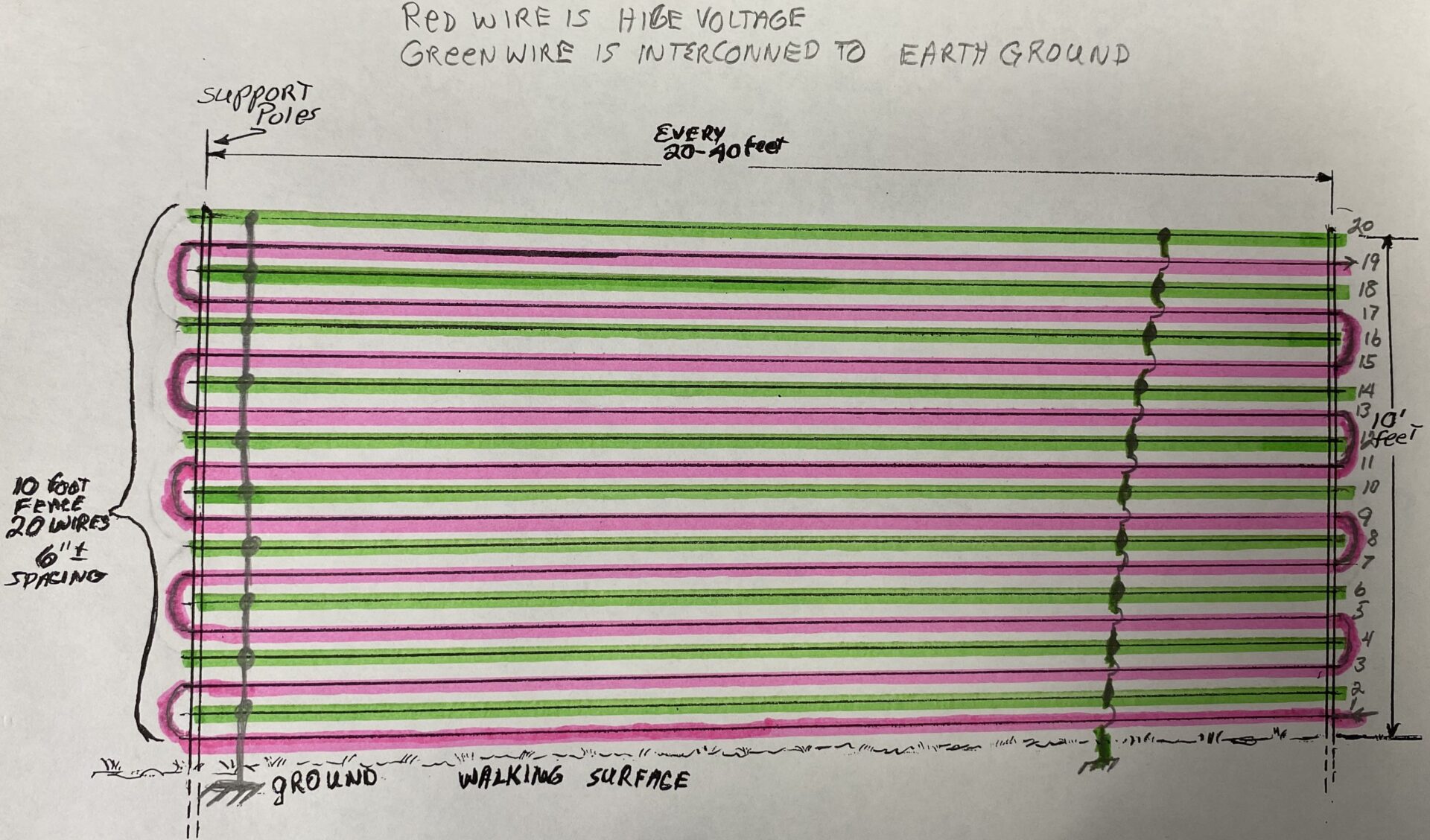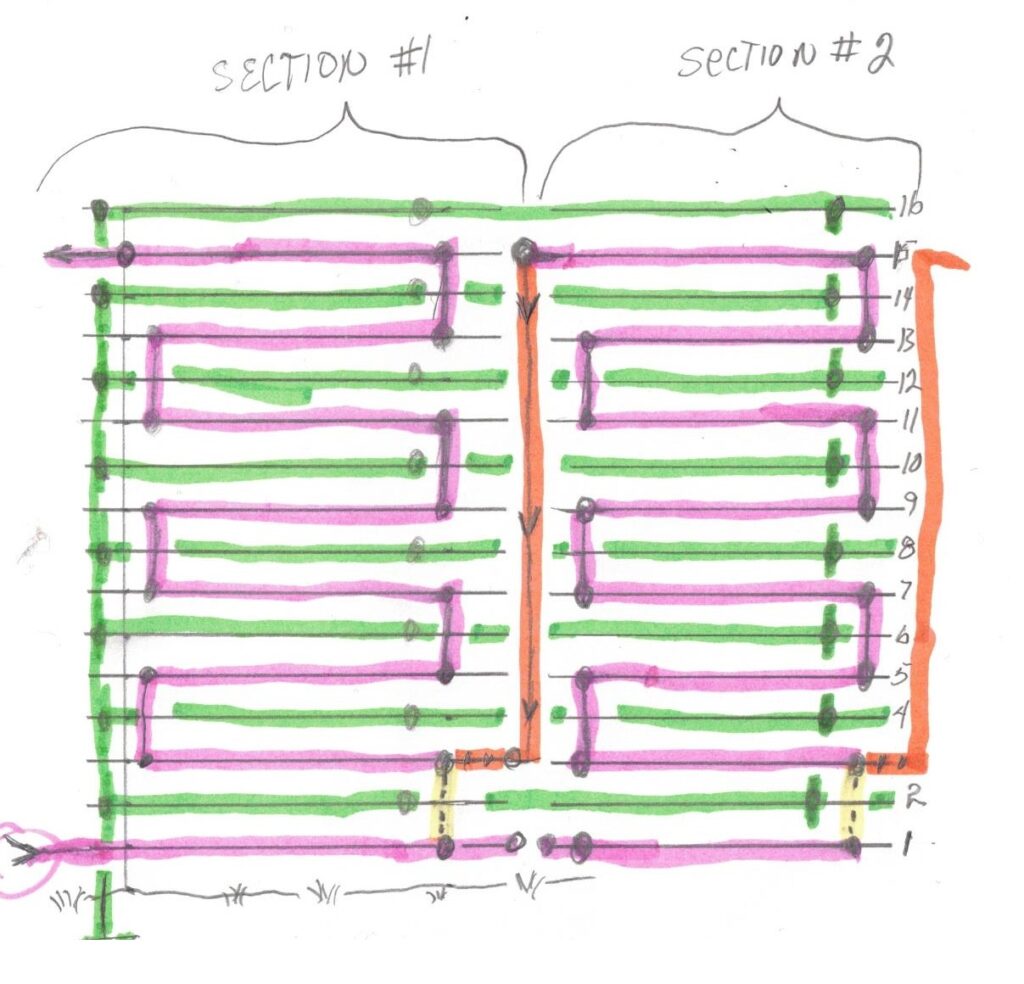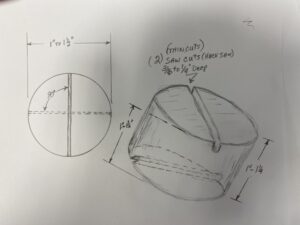How to Build an Effective “Trouble-Free” Perimeter Fence
The most effective fence configuration for human exclusion is where the high voltage wire alternates with a ground wire. If any of the fence wires are cut or shorted out (either ground wires or high voltage wires) you get an alarm. Think about it. Not only an alarm from the loss of voltage at the far end, but the loose/cut ends of the wire are going to come in contact with an adjacent wire, ground out and provide the desired alarm.
The fence construction shown as described below the picture, but you are only limited by what is available to you and your imagination.
Don’t be mislead, any high voltage fence can easily be nullified. A hair-sized wire can short out the high-voltage to ground making the high voltage effectively zero volts. This is why, when used a security application, the high voltage wire is essentially a single wire connected to make a single loop. The high voltage is connected at one end and the actual voltage is measured at the far end. The wire carrying the high voltage is folded back on itself within the confines of the section of fence. One section of fence is easily connected to the next section of fence. The result is a single loop, comprised of several smaller loops so that the fence provides 360 degrees of protection.
3 Suggested configuation.jpg … click on the picture to enlarge
The above illustration consist of 20 wires spaced 6 inched apart defining a height of 10 feet. We have installed fences that are 6 feet high, 8 feet high, 12 feet high, and we did one fence that was 20 feet high. The object is to contain and protect the space inside the fence while keeping unwanted animals out. Unwanted animals in the context of security includes humans.
What your see above in (figure 3) is that every other wire is connected to ground. The high
voltage wire cannot be bunched together of manipulated like is shown in figure 2.
Figure 3 description.
* The top wire is ground potential. Hopefully catch most of the blowing trash before it creates an alarm.
* Every other wire are high voltage wires which are inter-connected to form a single loop.
* The high voltage wire cut be cut in any place that will provide 2 wire ends that become feed and return for an additional loop. This cutting into the high voltage loop to add additional high voltage loops can be done many times.
* We do NOT recommend that you take a high voltage wire around a corner.
* The front corner to the gate is a loop, the high voltage wire attached to the gate is its own loop, from the gate to the next corner is another loop.
* The bottom wire just above earth ground is a high voltage wire.
The finished fence is now made up of several interconnected loops. This design method allows fast and easy trouble shooting to locate a short or break in any of the high voltage loops. This design is easily jumpered to allow most of your perimeter to maintain protection in the event of a fence break or short while being repaired and/or replaced.
While this design provides the most security, that bottom hot wire can be a trouble spot. When the fence is constructed on a concrete parking lot, the bottom wire is no longer a problem. We have learned that it is best to put a pad under the fence. Pouring a thin slab of cement 1 to 2 feet wide and 1 to 2 inches thick under the bottom wire was the solution. Another method we used was instead of pouring cement, we used discarded and reject floor tiles under that bottom wire. Make no mistake, that bottom hot wire is what will stop 99% of intrusions. By the same token you don’t want false alarms either.
Ground wire hookup and high voltage wire bypass
Ground wire hookup and high voltage wire bypass. This an easy solution to effect. Take a solid plastic 1 inch to 1-1/2 inch round rod and sliced/saw it into 1 to 1-1/2 inch slices. Tie all your ground wires together with a single vertical wire to an earth ground rod.
Take the slices of plastic and using a hack saw put a shallow saw cut on each end at 90 degrees to each other as show in the following below.
If necessary, one can drill small screw holes on either side of the cut (at45 degrees and 225 degrees) to screw a stainless large head screw as a keeper over the wire.
For comments and or questions, please connect with me


